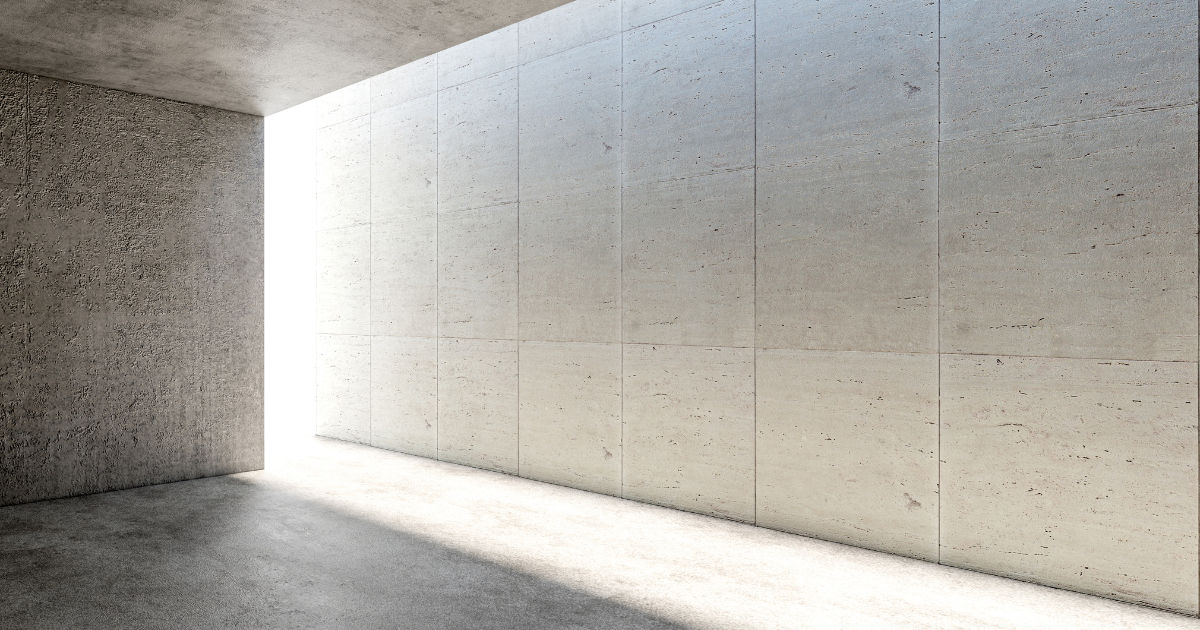
Over 100 schools in England have been forced to close just as the summer holidays ended—deemed at serious risk due to the RAAC used in the buildings reaching the end of its lifespan sooner than expected. Could construction analytics have mitigated this disaster or even prevented it from happening in the first place?
What is the Issue With the Schools Affected by RAAC or Aerated Concrete?
RAAC (or reinforced autoclaved aerated concrete) was used largely during the period of the 1950s up til the 1990s and any schools built using this material could be at risk. It has been recently found that the problem could extend to hospitals and other public buildings with a flat roof.
As the name suggests it is aerated in the same way that an Aero chocolate bar is and looks very similar in cross-section—up to the point that the Jeremy Vine Show featured a section called Is it Aero or is it Aerated Concrete? and most people could not tell the difference between two photos side by side.
In their wisdom builders of the ‘50s up til the ‘90s thought that as it was lighter and cheaper than normal concrete it would be great stuff. However, when you place the two materials in a pressure test normal concrete will be more or less untouched by a vice-like force whereas the RAAC concrete will crumble into dust.
RAAC also has a very limited lifespan so after 30 years it may go from being fine to suddenly collapsing the ceiling of the school as was the case over the summer holidays. This was not however the first incident of this kind as a staff room ceiling collapsed back in 2018 in Singlewell Primary in Gravesend, Kent.
The main problem is not so much in the concrete itself but the iron reinforcing bar present in some cases that can expand when water gets into the concrete planks, causing the concrete to crumble.
Would Analytics Help or Even Prevent the Situation With the RAAC Crisis Completely?
There are several ways that construction analytics could have helped to mitigate the damaging effects of this crisis for many school children in England who have already had lessons interrupted through COVID-19 and teachers’ strikes. However, could analytics have prevented the issue from ever taking place?
Cutting-edge construction firms use AI tools that can analyse a range of building materials and automatically select the best one to use for the job based on the requirements.
For example, Ansys Granta Selector materials selection software lets you validate your materials choices, select the best materials for your application and then export simulation-ready materials data.
So arguably if a machine from the modern world included aerated concrete within its sample of potential construction materials, it would have probably thrown it in the bin pile within 0.06 seconds, along with asbestos and any other suspect materials from the ‘50s onwards.
Apart from preventing huge crises such as the recent RAAC problem, these types of AI tools can also save hours of time and perform tasks that would have been impossible before.
For example, a builder may have worked with 20 or 30 different materials and be able to form some idea which is best based on experience, but it would be difficult to scientifically check, say, 200 different options and weigh up the correct one based on a range of factors.
Through analytics and AI tools similar to Ansys Granta Selector, construction firms will soon be able to say we want the most waterproof option that costs £X per tonne, is the most hard-wearing and will last for 100 or 200 years—give us the best three choices.
The software would then calculate that within minutes and present the most suitable options. Anything that fell below that category and was expected to only last for 30 years would be immediately disregarded and eliminated from the selection.
So one AI tool alone could have prevented this whole disaster.
Could Analytics Still Help Once the RAAC Schools and Hospitals Have Been Built?
What if there was no option to perform AI analysis of building materials prior to the schools and hospitals going up? For example, if a leading AEC firm with all the latest technology took over a portfolio of property that included the RAAC buildings already in place, could analytics still save the day?
Even without the initial material selection, there are a number of ways that AI tools and construction analytics could resolve the RAAC issue.
The blame lies mainly in the risk management side of the equation. RAAC concrete that was deemed safe was hastily decided to be unsafe when parts of it started collapsing in various schools up and down the country. By sheer luck in most of the instances so far there have been no serious injuries as children have been away on holidays or safely out of the vicinity. However this was not the case in Milton Keynes where the hall ceiling collapsed in Southwood School as the concrete gave way following storm damage, injuring one of the pupils who was present at the time.
With effective risk analysis as performed by AI tools and construction analytics, this would not be an eventuality. Commonly used Risk management software includes ClickUp, Risk Cloud, Vendor360, Lendflow and Resolver.
Several years before the RAAC concrete became a problem the AI software would be sending alerts to the relevant authorities or members of the AEC firm itself, letting them know that the building materials had passed their expiry and that maintenance would need to be scheduled urgently.
Of course, the government were actually warned about the problem as early as 2002 by the Building Research Establishment and the first school ceiling collapsed in 2017, so it could be argued that even with AI-enhanced risk analysis there could still be a problem as this information would likely be ignored as well—unless the AI could schedule the repairs for you…
How Could AI Forecasting and Maintenance Planning Save the Day When All Other Options Have Failed?
Even if the AI-assisted material selection was unavailable and the construction analytics in the risk management were ignored, the crisis could still be averted with analytics-based planning and event forecasting.
So in this case, the AI software would analyse all the materials used throughout the building, and the RAAC concrete would be checked against all relevant information stored across a range of sources to create a risk profile for the building. This information could include
- 2002 warnings from Building Research Establishment accessible by the software
- 2017 and 2018 catastrophic failures were logged and used to modify expected outcomes
- Overall density and expected longevity of the material
- Length of time since the building was initially constructed
- Weather conditions at the site and any other factors that could affect levels of damage
Taking this information into account, along with hundreds or thousands of data points used to make the decision, the software can then accurately forecast the probability of future events such as catastrophic failures of the material and when the AI sees there is a 90-100% chance of the ceiling collapsing in July, it will have already scheduled and arranged the repair works for the previous summer holidays and ordered all the necessary supplies for the job. Problem solved.
Can AI Save Us From Ourselves?
In summary, it seems that even when armed with the most up-to-date and detailed information, the powers that be will still find a way to ignore this and let all manner of calamities occur, despite being forewarned years in advance. However, with a full suite of AI tools and construction analytics at their disposal, the chances of this concrete crisis happening could be greatly reduced and even prevented altogether.
For more information on how analytics can help the construction industry take a look at some of our real-world examples at Lyon.tech. Contact us to see how we can help your business today.




